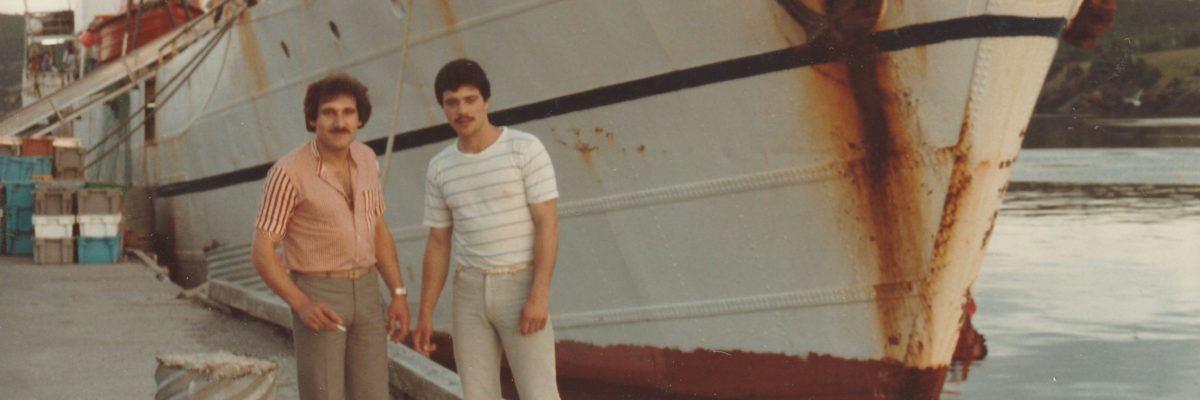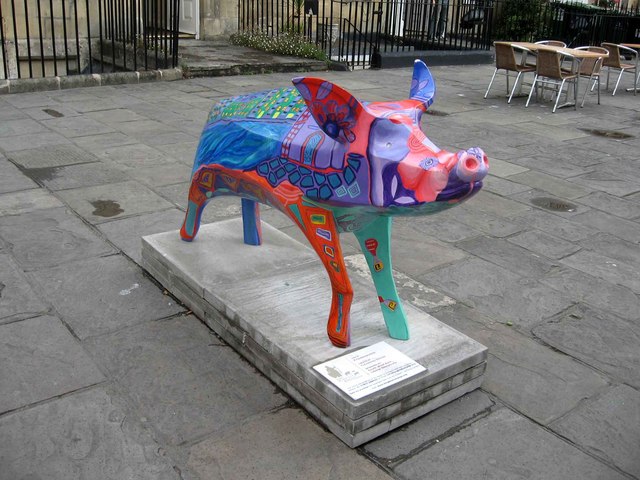Friends from Away: The Portugese crews of the 1980s, in pictures
BY Emily Deming
March 2018
Berkley Reynolds isn’t sure how he first met the guys from the Portuguese fishing boats, the ones that used to come into St John’s Harbour, but “the more I met, the more I met. And after a while they would have my phone number when they came in and they would call and I would go down to the boats and they would come up to the house.”
It was the early 1980s, and Reynolds, a social worker, had recently moved to town from Salmon Cove. His house was a cabin on a pond down a “little woods path” behind the Club Commodore off Torbay Road, around the Pine Line
Reynolds “found them to be a very friendly, easy-going young crowd. They seemed to like St John’s, of course.” He picked up a bit of Portuguese from them, “unfortunately not the good language,” he says with a wicked smile. “Besides, they were more interested in learning English than teaching me Portuguese.”
He “ended up meeting quite a few over a period of four-five years” but says he “wasn’t smart enough to keep all their names and addresses.” Though he does have a photo album full of pictures he took along with a few black-and-white school portrait miniatures that his friends gave him with their contact information scrawled on the back. He also has several notebooks containing partial lists he made of the ships that docked and the men he met from each.

A moment of spontaneity in St. John’s harbour.
Now, in retirement, with the help of social media, Reynolds is working to track down and reconnect with the men who sailed through all those years ago. This new “adventure and mission” started a few years ago when Reynolds went to Mount Carmel Cemetery to attend the unveiling of the monument to the White Fleet sailors who died at sea. (The cemetery is the resting place of Dionisio Esteves, buried there in 1966; information about him was lost for decades but rediscovered in 2012 and is now the focus of an annual ceremony.) The unveiling was attended by the Portuguese ambassador to Canada, and Reynolds also met Jean Pierre Andrieux, the Honorary Vice Consul of Spain for Newfoundland and Labrador and author of several books including The White Fleet, who was instrumental in creating the memorial. Andrieux, he said, showed interest in his collection of over 100 photographs, believing the photographs “reveal a lot of their culture, the lifestyle of the Portuguese in St John’s.”
In 1982, Reynolds had moved from Torbay Road out to Paradise, all the while maintaining a sort of rotating cluster of chain friendships that were passed on as his friends sailed off and their friends sailed in. His photo album is perfectly evocative of a time in these young men’s lives drenched in a sense of fun: preening for the camera, goofing with snow crabs as props, lying on the grass drinking Sagres beer behind his cabin off the Pine Line.
“Where we went, they went,” says Reynolds. One Sunday, he drove a group of them up to Salmon Cove where his mom served them Jigg’s dinner. Reynolds’ sister is helping to identify the men around the table that day as they all signed his sister’s guest book.
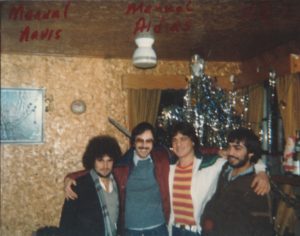
Christmas with the crew.
At Christmas one year, some of the guys who were docked wanted to decorate a tree. Reynolds went down to the harbour and picked them up and they went back to his place. He remembers the tinsel “icicles” they used. “There was always a way you did that. Say they were twelve inches long, you put ten inches down and let them hang over. But they didn’t go with that concept. They picked up a bunch of icicles and flicked ‘em at the tree! So ever since that time, I’ve never ever worried about a Christmas tree being decorated.”
One of the sailors, Pedro José “Joe” Alves, rented Reynold’s basement apartment after he moved to Paradise. Some of Reynolds’ photos show his visits to Joe’s hometown of Figueira Da Foz in Portugal. When Joe’s family came over to stay with him in Newfoundland, there was an empty house back in Figueira they would lend to Reynolds “for a month or so at a time.” As a Newfoundlander visiting Portugal back in the 80s, Reynolds says he fit right in. With his easy manner and quick tan but limited Portuguese, he found the locals “couldn’t understand why I wasn’t talking to them.”
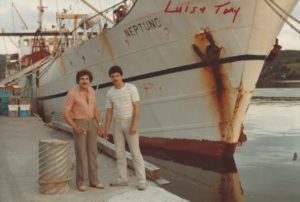
Luis and Tony in front of the Neptuno.
In 1989, Reynolds met Joe’s fiancée, Isobel. Her brother was on the Portuguese boats, but he didn’t bother to get his name because by then it had been years since the White Fleet had been coming to Newfoundland. In 1986, Portugal had formally joined the European Union and that same year Canada stopped permitting them, along with other foreign fishing vessels coming in from the Grand Banks, use of St John’s for “supplies and repairs.”[1]
Two days after Reynolds came home from that trip, Hurricane Hugo swept through the Atlantic Ocean. Portuguese boats took shelter in St John’s harbour. “So now,” thinks Reynolds, “I’m in a pickle. How am I going to find [if Isobel’s brother is on board] without knowing his name? There were seven or eight boats here and I couldn’t reach Joe over in Portugal.” But Reynolds did have a photo of Joe and Isobel. “I took the picture and I went down to the boat and I said I would just pick a boat. [At the] first boat, I talked to the guys because I half-knew some Portuguese. One of the men looked at my picture and said ‘one moment! one moment!’ He went down below and brought up the brother. So then the brother’s first question to me was ‘what are you doing with a picture pf my sister?!’ He ended up coming to the house and phoning Portugal and he says, ‘guess where I am?’ He spent half the time up here while [his boat] was in the harbour. One of those small world stories”
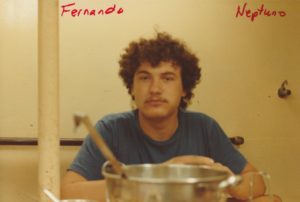
Fernando, a Neptuno crew member.
Now, as he tracks down his old friends, Reynolds’ “motive is to contact some of them and see if they want a picture [from] when they were in Newfoundland.” And he hasn’t stopped making new friends. Looking for one man on Facebook, Joao Laura, Reynolds got his last name wrong and ended up talking to a different Joao, who he “had a fine chat with for two or three days, going back and forth.” When he finally did find the man he was looking for, he “invited me to Portugal and said I could stay at his house. I haven’t decided yet, but it told me a lot that he would invite me over after 35 years and offer that I could stay at his house.” It also says much about the Portuguese who came through, and of Berkley Reynolds.
[1] Kurlansky, Mark; Cod: A biography of the fish that changed the world, Vintage Canada, 1998, p180

